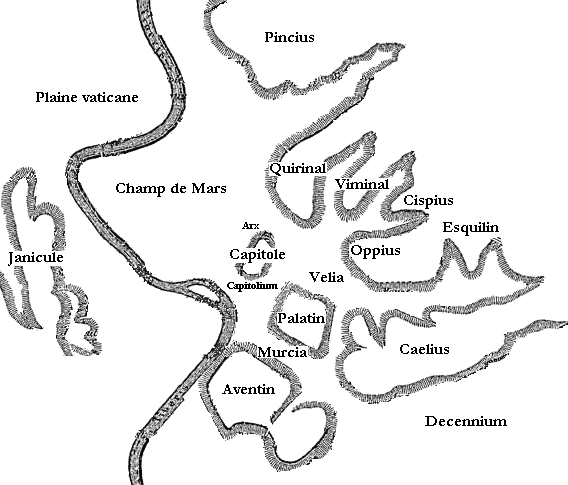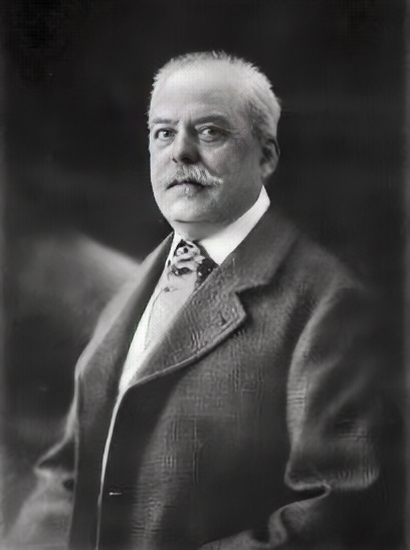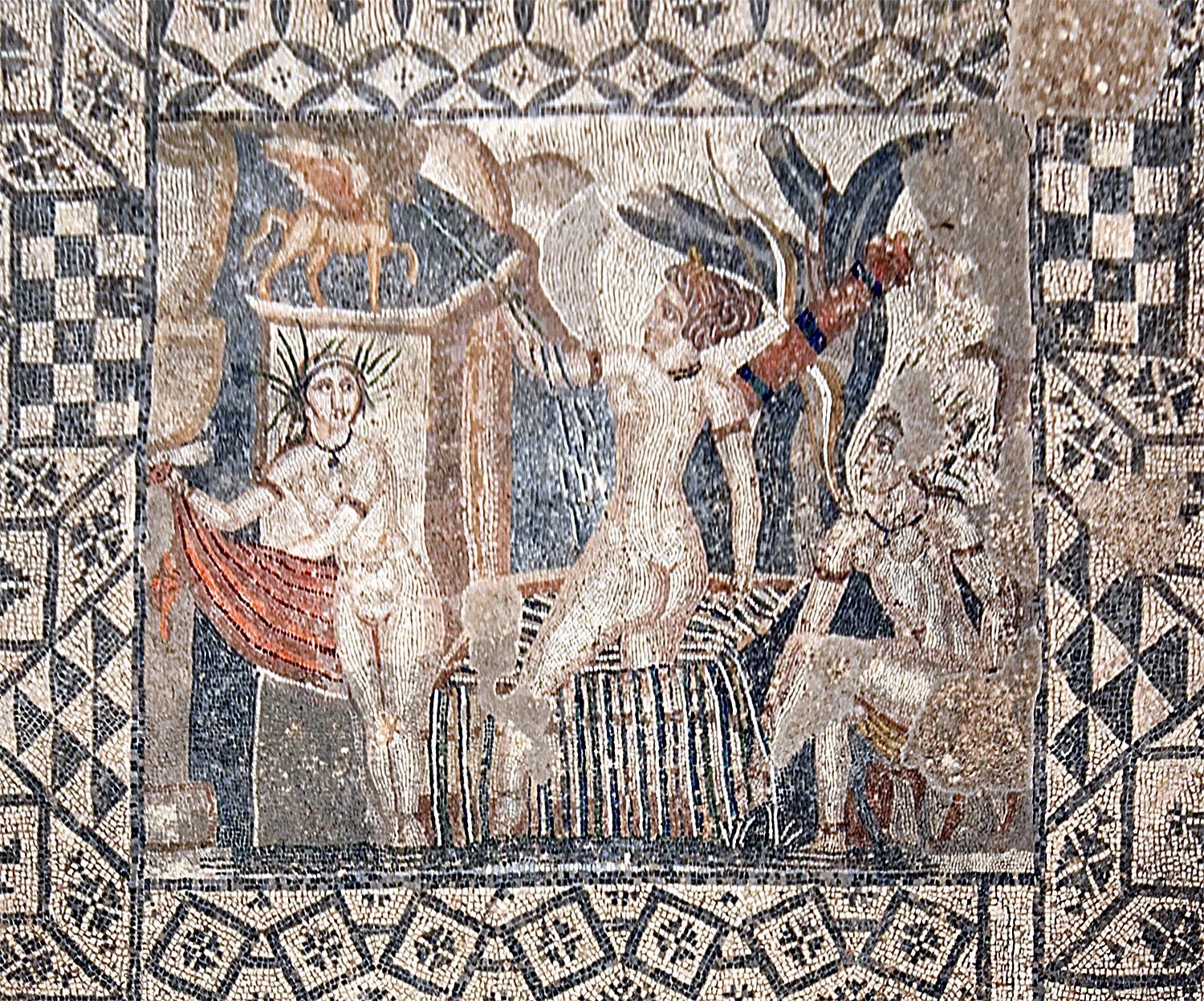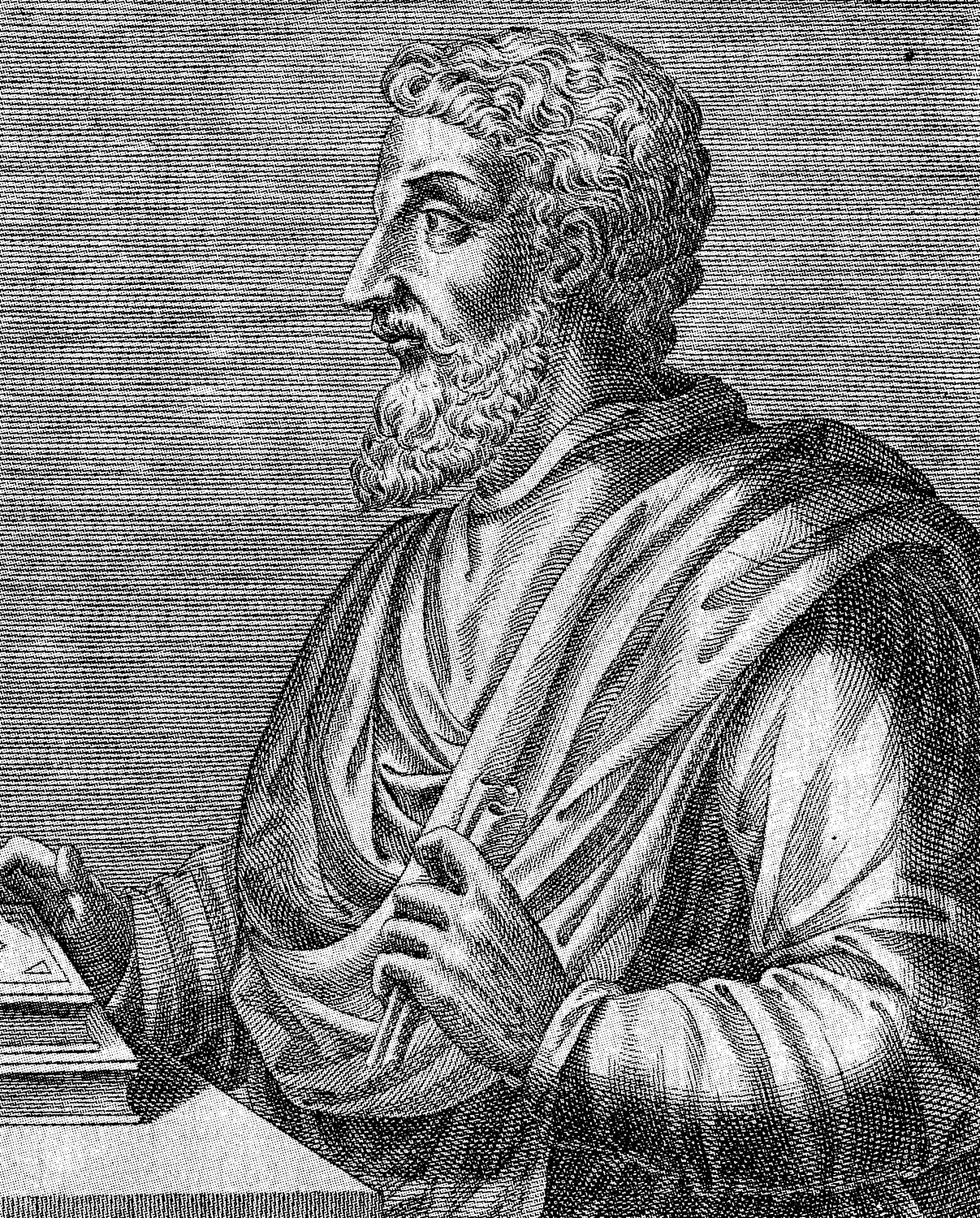|
Carinae
''Carinae'' was an area of ancient Rome. It was one of its most exclusive neighborhoods, where many of the senatorial class lived. Florus described the ''Carinae'' as the "''most celebrated part of the city''" (''celeberrima pars urbis''). Description The ''Carinae'' occupied the western end of the southern spur of the Esquiline hill in Rome. The district likely incorporated the earlier Fagutal, with the northern tip of the Oppian Hill on its western side; it extended between the Velian Hill and the ''Clivus Pullius''. Its outlook was southwestern, across the swamps of the ''Palus Ceroliae'' toward the Aventine. The slopes of the neighborhood near the Velia were crossed by the ''vicus Cyprius'', where, according to a Roman tradition taken up by Livy, Tullia would have killed her father Servius Tullius, overwhelming him with her chariot pulled by horses. The same passage from Livy indicates the existence of a temple dedicated to Diana in the ''Carinae''. The '' Murus Terreus ... [...More Info...] [...Related Items...] OR: [Wikipedia] [Google] [Baidu] |
Temple Of Tellus
The Temple of Tellus was a sanctuary in Ancient Rome, erected after 268 BCE and dedicated to the goddess Tellus. History The temple was founded by Publius Sempronius Sophus, following a vow he took when an earthquake occurred when he was commanding the Roman forces during a battle with the Picentes in 268 BCE. The site of the temple was in the Carinae district on the Esquiline Hill, and was reputedly built on the site where the house of Spurius Cassius Vecellinus once stood. The houses of Mark Antony and Cicero stood close to the temple, and Cicero restored the temple around 54 BCE after it had become run down, as he had gained possession of some land that had belonged to the temple. The temple was occasionally used for meetings of the Senate, and on its walls was displayed a map or a personification of Italy (described by Varro as ''Italia picta''). It was destroyed in the Great Fire of Rome in 64 CE, but was subsequently rebuilt. It was still listed in the ''Notitia'' as stand ... [...More Info...] [...Related Items...] OR: [Wikipedia] [Google] [Baidu] |
Oppian Hill
The Oppian Hill (Latin, ''Oppius Mons''; ) is the southern spur of the Esquiline Hill, one of the Seven hills of Rome, Italy. It is separated from the Cispius on the north by the valley of the Suburra, and from the Caelian Hill on the south by the valley of the Colosseum. The Oppius and the Cispius together form the Esquiline plateau just inside the line of the Servian Wall. In the divisions of the Septimontium (seven hills) Fagutal appears as an independent locality, which implies that originally "Oppius" was strictly applied to this spur except the western end. The northern tip of this western end was also called Carinae, which extended between the Velian Hill and the Clivus Pullius, looked out to the southwest (across the swamps of the Palus Ceroliae towards the Aventine), incorporated the Fagutal and was one of ancient Rome's most exclusive neighborhoods. At least for religious purposes the name Oppius continued in use to the end of the Roman Republic; no later i ... [...More Info...] [...Related Items...] OR: [Wikipedia] [Google] [Baidu] |
Murus Terreus
The Murus Terreus Carinarum is an obscure earthwork fortification of the ancient city of Rome known from a passage in the works of Varro. The Murus Terreus may have been a part of Rome's earliest fortifications, often referred to as the Servian Wall. While the location of the ''Murus Terreus'' remains unknown and debated, it is thought likely that it belonged to the fortifications of the Oppian Hill The Oppian Hill (Latin, ''Oppius Mons''; ) is the southern spur of the Esquiline Hill, one of the Seven hills of Rome, Italy. It is separated from the Cispius on the north by the valley of the Suburra, and from the Caelian Hill on the sout ..., thus placing it between the Carinae and the Subura. Pinza suggested that the works were located on the summit of the Oppian.Pinza ''Bullettino della Commissione Archeologica Comunale di Roma'' 1898:93; 1912:86-7. References {{coord missing, Italy Walls of Rome ... [...More Info...] [...Related Items...] OR: [Wikipedia] [Google] [Baidu] |
Rodolfo Lanciani
Rodolfo Amedeo Lanciani (1 January 1845 – 22 May 1929) was an Italian archaeologist, a pioneering student of ancient Roman topography. Among his many excavations was that of the House of the Vestals in the Roman Forum. Lanciani earned LL.D. degrees from Aberdeen, Glasgow, and Harvard and a Ph.D. degree from Würzburg. Life Lanciani was born in Rome, although some state he was born in Montecelio, now Guidonia Montecelio. He was professor of Roman topography at the Università di Roma from 1878 until 1927. He is known today chiefly for his ''Forma Urbis Romae'' (1893‑1901) and the ''Storia degli scavi'', a regular summary of Roman excavations that started appearing in 1902. His students included Giulio Giglioli. Together with important British art historians such as Austen Henry Layard he re-edited the original 1843 guidebook to Rome for John Murray. He was a member of the Accademia dei Lincei, the Academia di S. Lucia, the Berlin Institute, the Royal Academy of Belgium ... [...More Info...] [...Related Items...] OR: [Wikipedia] [Google] [Baidu] |
Diana (mythology)
Diana is a goddess in Religion in ancient Rome, Roman religion, primarily considered a patroness of the countryside and nature, hunters, wildlife, childbirth, crossroads, the night, and the Moon. She is Syncretism, equated with the Greek mythology, Greek goddess Artemis, and absorbed much of Artemis' mythology early in Roman history, including a birth on the island of Delos to parents Jupiter (mythology), Jupiter and Latona, and a twin brother, Apollo,''Larousse Desk Reference Encyclopedia'', The Book People, Haydock, 1995, p. 215. though she had Diana Nemorensis, an independent origin in Italy. Diana is considered a virgin goddess and protector of childbirth. Historically, Diana made up a triad with two other Roman deities: Egeria (mythology), Egeria the water nymph, her servant and assistant midwife; and Virbius, the woodland god. Diana is revered in modern Modern paganism, neopagan religions including Reconstructionist Roman religion, Roman neopaganism, Stregheria, and Wic ... [...More Info...] [...Related Items...] OR: [Wikipedia] [Google] [Baidu] |
Servius (grammarian)
Servius, distinguished as Servius the Grammarian ( or ), was a late fourth-century and early fifth-century grammarian. He earned a contemporary reputation as the most learned man of his generation in Italy; he authored a set of commentaries on the works of Virgil. These works, ("Exposition on Three Works of Virgil"), ("Commentaries on Virgil"), ("Commentaries on the Works of Vergil"), or ("Commentaries on the Poems of Virgil"), constituted the first incunable to be printed at Florence, by Bernardo Cennini, in 1471. In the ''Saturnalia'' of Macrobius, Servius appears as one of the interlocutors; allusions in that work and a letter from Symmachus to Servius indicate that he was not a convert to Christianity. Name The name Servius also appears as Seruius owing to the unity of the Latin letters V and U from antiquity until as late as the 18th century. Many medieval manuscripts of Servius's commentaries give him the praenomen Marius or Maurus and the cognomen Honoratus. ... [...More Info...] [...Related Items...] OR: [Wikipedia] [Google] [Baidu] |
Tiberius
Tiberius Julius Caesar Augustus ( ; 16 November 42 BC – 16 March AD 37) was Roman emperor from AD 14 until 37. He succeeded his stepfather Augustus, the first Roman emperor. Tiberius was born in Rome in 42 BC to Roman politician Tiberius Claudius Nero (father of Tiberius Caesar), Tiberius Claudius Nero and his wife, Livia Drusilla. In 38 BC, Tiberius's mother divorced his father and married Augustus. Following the untimely deaths of Augustus's two grandsons and adopted heirs, Gaius Caesar, Gaius and Lucius Caesar, Tiberius was designated Augustus's successor. Prior to this, Tiberius had proved himself an able diplomat and one of the most successful Roman generals: his conquests of Pannonia, Dalmatia (Roman province), Dalmatia, Raetia, and (temporarily) parts of Germania laid the foundations for Roman Empire, the empire's northern frontier. Early in his career, Tiberius was happily married to Vipsania, daughter of Augustus's friend, distinguished general and intended heir, Ma ... [...More Info...] [...Related Items...] OR: [Wikipedia] [Google] [Baidu] |
Mark Antony
Marcus Antonius (14 January 1 August 30 BC), commonly known in English as Mark Antony, was a Roman people, Roman politician and general who played a critical role in the Crisis of the Roman Republic, transformation of the Roman Republic from a Constitution of the Roman Republic, constitutional republic into the autocratic Roman Empire. Antony was a relative and supporter of Julius Caesar, and he served as one of his generals during the conquest of Gaul and Caesar's civil war. Antony was appointed administrator of Italy while Caesar eliminated political opponents in Greece, North Africa, and Spain. After Assassination of Julius Caesar, Caesar's assassination in 44 BC, Antony joined forces with Lepidus, another of Caesar's generals, and Octavian, Caesar's great-nephew and adopted son, forming a three-man dictatorship known to historians as the Second Triumvirate. The Triumvirs defeated Caesar's killers, the ''Liberatores'', at the Battle of Philippi in 42 BC, and divided th ... [...More Info...] [...Related Items...] OR: [Wikipedia] [Google] [Baidu] |
Pompey
Gnaeus Pompeius Magnus (; 29 September 106 BC – 28 September 48 BC), known in English as Pompey ( ) or Pompey the Great, was a Roman general and statesman who was prominent in the last decades of the Roman Republic. As a young man, he was a partisan and protégé of the dictator Sulla, after whose death he achieved much military and political success himself. He was an ally and a rival of Julius Caesar, and died in civil war with him. A member of the senatorial nobility, Pompey entered into a military career while still young. He rose to prominence serving Sulla as a commander in the civil war of 83–81 BC. Pompey's success as a general while young enabled him to advance directly to his first consulship without following the traditional '' cursus honorum'' (the required steps to advance in a political career). He was elected as consul on three occasions (70, 55, 52 BC). He celebrated three triumphs, served as a commander in the Sertorian War, t ... [...More Info...] [...Related Items...] OR: [Wikipedia] [Google] [Baidu] |
Cicero
Marcus Tullius Cicero ( ; ; 3 January 106 BC – 7 December 43 BC) was a Roman statesman, lawyer, scholar, philosopher, orator, writer and Academic skeptic, who tried to uphold optimate principles during the political crises that led to the establishment of the Roman Empire. His extensive writings include treatises on rhetoric, philosophy and politics. He is considered one of Rome's greatest orators and prose stylists and the innovator of what became known as "Ciceronian rhetoric". Cicero was educated in Rome and in Greece. He came from a wealthy municipal family of the Roman equestrian order, and served as consul in 63 BC. He greatly influenced both ancient and modern reception of the Latin language. A substantial part of his work has survived, and he was admired by both ancient and modern authors alike. Cicero adapted the arguments of the chief schools of Hellenistic philosophy in Latin and coined a large portion of Latin philosophical vocabulary via ... [...More Info...] [...Related Items...] OR: [Wikipedia] [Google] [Baidu] |
Marcus Terentius Varro
Marcus Terentius Varro (116–27 BCE) was a Roman polymath and a prolific author. He is regarded as ancient Rome's greatest scholar, and was described by Petrarch as "the third great light of Rome" (after Virgil and Cicero). He is sometimes called Varro Reatinus ("Varro of Rieti") to distinguish him from his younger contemporary Varro Atacinus ("Varro of Atax"). Biography Varro was born in or near Reate (now Rieti in Lazio) into a family thought to be of equestrian rank. He always remained close to his roots in the area, owning a large farm in the Reatine plain (reported as near Lago di Ripasottile,) until his old age. He supported Pompey, reaching the office of praetor, after having served as tribune of the people, '' quaestor'' and '' curule aedile''. It is probable that Varro was discontented with the course on which Pompey entered when the First Triumvirate formed 60 BC, and he may thus have lost his chance of rising to the consulship. He actually ridiculed th ... [...More Info...] [...Related Items...] OR: [Wikipedia] [Google] [Baidu] |
Ab Urbe Condita (Livy)
The ''History of Rome'', perhaps originally titled , and frequently referred to as (), is a monumental history of ancient Rome, written in Latin between 27 and 9 BC by the Roman historian Titus Livius, better known in English as "Livy". The work covers the period from the legends concerning the arrival of Aeneas and the refugees from the fall of Troy, to the Founding of Rome, city's founding in 753 BC, Overthrow of the Roman monarchy, the expulsion of the King of Rome, Kings in 509 BC, and down to Livy's own time, during the reign of the emperor Augustus. The last event covered by Livy is the death of Nero Claudius Drusus, Drusus in 9 BC. 35 of 142 books, about a quarter of the work, are still extant. The surviving books deal with the events down to 293 BC (books 1–10), and from 219 to 166 BC (books 21–45). Contents Corpus The ''History of Rome'' originally comprised 142 "books", 35 of which—Books 1–10 with the Preface and Books 21–45—still exis ... [...More Info...] [...Related Items...] OR: [Wikipedia] [Google] [Baidu] |









